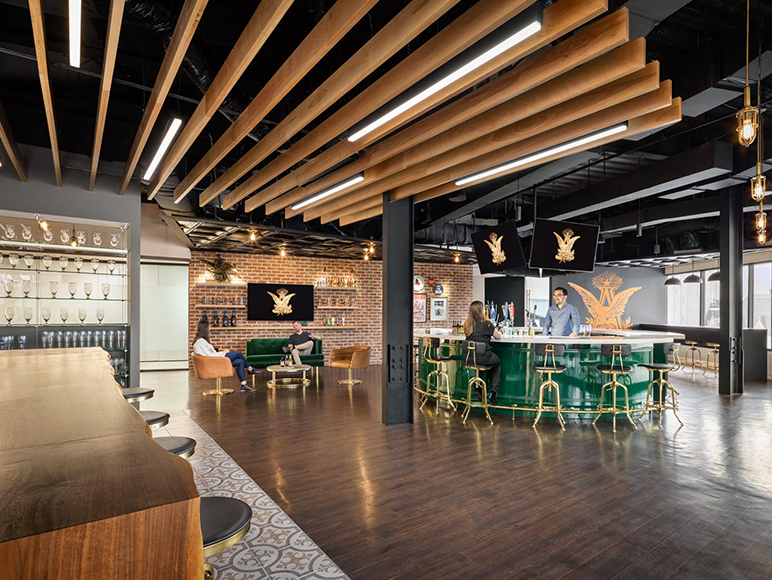
Akima Global Headquarters
Akima is an Alaskan Native corporation that powers some of the most mission critical work of the federal government while creating a long-lived asset for its Iñupiat shareholders. Akima’s leadership partnered with OTJ Architects in a uniquely collaborative and culturally driven process that would translate the rich Iñupiat heritage and values into a destination headquarters, primed to fuel the enterprise’s continued success well into the future.
Like its Iñupiat shareholders, Akima’s headquarters “walks in two worlds with one spirit:” The workplace celebrates a rich cultural legacy yet looks resolutely to the 21st century by empowering staff to do their best, most productive work in service to the company and the communities in which it operates. From the onset of the project, the client’s leadership embraced the power of design to promote collaboration. As a result, increased square footage was allocated to shared amenity spaces that foster the casual exchange of knowledge while offices were fronted with glass to underscore transparency at all levels of the organization.
The project testifies to the endurance of the Iñupiat culture – one that draws on 10,000 years of resilience to meet the challenges of globalization and climate change with integrity and respect for all. Working with Akima’s CEO, our designers selected artifacts and photographs from the organization’s archives and deployed these assets in a curated, high-impact environmental graphics package situated at key locations throughout the floorplan. Lastly, the project’s success results in no small part from the close partnership forged between the design team and Akima’s CEO, who facilitated the design process and served as a conduit between the organization’s shareholders and the project’s objectives.
Location
Herndon, VA
Size
70,000 RSF
Industry
Government Contractor
Services
Experiential Design
Interiors


The Akima Global Headquarters celebrates a rich cultural legacy yet looks resolutely to the 21st century by empowering staff to do their best, most productive work in service to the communities in which the organization operates.







